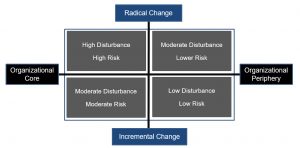While digital transformation started gradually over 25 years ago, this new wave of data driven innovation has steadily gained momentum. Today, digital transformation includes a wide umbrella of technologies – including the cloud, Big Data, analytics, artificial intelligence, mobile/mobility, and IoT.
For me, the digital transformation revolution gives us an incredible number of tools to improve how we work and live. With these new tools, we can design and deliver personalized digital experiences to employees and customers, store and access data on multiple devices, co-author and collaborate in real-time, meet face-to-face virtually with one or many people, and do all these things from practically any device and location.
Depending where you and your organization sit on the digital transformation maturity continuum, you may be an infant at the crawl stage, a toddler at the walk stage or more advanced and starting to run or even fly. As you prepare to move up this continuum, you will need organizational change management tools to help you calibrate the degree of disruption and risk that people in your organization may experience.
These dynamics can be illustrated across two continuums below. In this model from Gus Pennington, the horizontal axis represents the location of the change in the organization (core to peripheral areas). The vertical axis represents the type of change (radical or incremental change). Radical change can represent digital changes that create fundamental changes, new paradigms, and shifts in organizational culture. Incremental change represents digital changes that bring gradual change or enhancements to existing digital tools.
Type of Change and Degree Organizational Impact Continuums
After you plot where your digital change falls across these two continuums, you can gauge the degree of individual and organizational disturbance and risk that people may experience.
To take this model one step further, I overlay a heat map over the continuums below to show that radical change at the core of the organization will create a high (red) need for planned organizational change management. This type of support will help people prepare for the change and mitigate risks that emerge. In contrast, incremental change to a smaller audience on the periphery of the organization may have a lower (yellow) need for planned organizational change support due to the decreased disruption and risk. While moderate in disturbance and risk, areas in orange still have need for organizational change management support and these needs should not be overlooked.
Need for Organizational Change Management Heat Map
While this model and heat map are simple, keep these tools in your change toolkit. They will come in handy next time you facilitate a discussion with your leaders to assess the degree of disturbance and risk as you plan your next digital change project and calibrate the need to include a robust organizational change management strategy.



